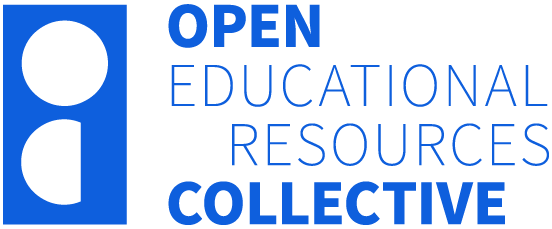Foreword
Digital health is rapidly transforming the way in which health care is delivered. The work of nurses and midwives, as pivotal professionals engaged in care delivery, is widely impacted by digital technologies along with the collection, interpretation, and application of large volumes of health-related data. As such, it is essential for nurses and midwives to possess the necessary skills and capabilities to function in increasingly digitised health and social care settings. This Open Educational Resource (OER) seeks to address the necessary content to enable this, providing the foundations of evidence-based digital health for undergraduate nursing and midwifery students along with clinicians wanting to increase their digital knowledge and skills.
The book grounds digital health nursing concepts in concrete practices and enables learners to explore these through practical online learning activities, designed around the five domains and embedded capability statements of the Australian Digital Health Agency’s (2020) National Nursing and Midwifery Digital Health Capability Framework, namely:
- Digital professionalism
- Leadership and advocacy
- Data and information quality
- Information-enabled care
- Technologies.
The resource has been developed by nursing and midwifery leaders in digital health from across higher education institutions, with expertise in editing, writing, and open educational publishing and provides core content for undergraduate nursing and midwifery curricula across Australian universities and TAFE institutions, reflecting contemporary best practice in digital health. The book will also be beneficial in informing postgraduate education programs focusing on digital health. It is informed by a perspective that recognises the digital divide and limitations of digital health in certain contexts. In this way, the book distinctively addresses digital health for rural and remote populations, and culturally safe ways of approaching digital health for Indigenous communities.
This OER addresses nursing education needs identified by the National Nursing and Midwifery Digital Health Capability Framework and professional accrediting organisations, such as:
- a need to integrate the Framework by scaffolding it into curricula (Stunden et al., 2024)
- nursing academics’ limited knowledge and confidence in teaching digital health theory and its application in nursing (Zhao et al., 2024)
- nursing students being unprepared for settings with rapidly evolving technologies (Raghunathan et al, 2023) and new models of care (e.g., telehealth) (James et al., 2021)
- a recognised gap in digital dexterity for new professionals (Stunden et al., 2024)
- barriers for graduate work readiness, and future health workforce digital capabilities (Ho et al., 2023; Morris et al., 2021; Raghunathan et al., 2023)
- need for learning resources enabled by case studies reflecting best practice expectations, emerging trends, and supporting lifelong learning and continuing professional development (ANMAC, 2019; NMBA,2022)
- an integrated approach to interprofessional practice development, building knowledge, skills and attitudes supported by case studies, enabling positive team behaviours and competent interprofessional practice (ANMAC, 2019).
Additionally, this OER seeks to address gaps in existing learning resources, including:
- inability of traditional textbooks to keep pace with the rapidly changing nature of digital health practices
- expensive paper-based and online digital texts for both students and libraries, with licensing limitations increasing barriers to student access, especially in rural areas
- lack of integrated focus on rural and remote health care contexts, pertinent use of case studies, addressing geographical barriers to education and workforce development priorities (Calleja et al., 2022)
- a lack of integrated principles of culturally safe digital health service delivery in partnership with Indigenous communities that reinforce professional practice expectations in accordance with Codes of Conduct for nurses and midwives (NMBA, 2018)
The nature of this OER enables content to be freely accessible and able to be used by educators and others. We encourage readers to utilise the content and feedback on their experiences using it as well as enhancements we could make in the future.
Editors
Associate Professor Jenny Davis, School of Nursing and Midwifery, La Trobe University
Professor Lisa McKenna, Health Professions Clinical Education Unit and School of Nursing and Midwifery, La Trobe University
References
Australian Digital Health Agency. (2020). National nursing and midwifery digital health capability framework. https://www.digitalhealth.gov.au/sites/default/files/2020-11/National_Nursing_and_Midwifery_Digital_Health_Capability_Framework_publication.pdf
Australian Nursing and Midwifery Accreditation Council (ANMAC). (2019). Registered Nurse Accreditation Standards 2019 Essential Evidence. https://www.anmac.org.au/sites/default/files/documents/06920_anmac_reg_nurse_std_ee_2019_updated_fa.pdf
Calleja, P., Wilkes, S., Spencer, M., & Woodbridge, S. (2022). Telehealth use in rural and remote health practitioner education: an integrative review. Rural and Remote Health, 22(1), 6467. https://doi.org/10.22605/RRH6467
Ho, K. H. M., Cheng, H. Y., McKenna, L., & Cheung, D. S. K. (2024). Nursing and midwifery in a changing world: Addressing planetary health and digital literacy through a global curriculum. Nursing Open, 11(1).
James S, Ashley C, Williams A, et al. (2021). Experiences of Australian primary healthcare nurses in using telehealth during COVID-19: a qualitative study. BMJ Open;11:e049095. doi: 10.1136/bmjopen-2021-049095
Lokmic-Tomkins, Z., Raghunathan, K., Almond, H., Booth, R. G., McBride, S. G., Tietze, M., … & McKenna, L. (2024). Perspectives on the implementation of health informatics curricula frameworks. Contemporary Nurse, 1-14. Advance online publication. https://doi.org/10.1080/10376178.2024.2343010
Morris, M. E., Brusco, N. K., Jones, J., Taylor, N. F., East, C. E., Semciw, A. I., Edvardsson, K., Thwaites, C., Bourke, S. L., Raza Khan, U., Fowler-Davis, S., & Oldenburg, B. (2023). The widening gap between the digital capability of the care workforce and technology-enabled healthcare delivery: a nursing and allied health analysis. Healthcare, 11(7). https://doi.org/10.3390/healthcare11070994
Nursing and Midwifery Board of Australia (NMBA). (2018). Joint statement – cultural safety: Nurses and midwives leading the way for safer healthcare. https://www.nursingmidwiferyboard.gov.au/Codes-Guidelines-Statements/Position-Statements/leading-the-way.aspx
Nursing and Midwifery Board of Australia (NMBA). (2022). Fact sheet: Continuing professional development. https://www.nursingmidwiferyboard.gov.au/Codes-Guidelines-Statements/FAQ/CPD-FAQ-for-nurses-and-midwives.aspx
Raghunathan, K., McKenna, L., & Peddle, M. (2023). Baseline evaluation of nursing students’ informatics competency for digital health practice: A descriptive exploratory study. Digital Health, 9. https://doi.org/10.1177/20552076231179051
Stunden, A., Ginige, A., O’Reilly, R., Sanagavarapu, P., Heaton, L., & Jefferies, D. (2024). Nursing students’ preparedness for the digitalised clinical environment in Australia: An integrative review. Nurse Education in Practice, 75. https://doi.org/10.1016/j.nepr.2024.103908
Zhao, L., Abdolkhani, R., Walter, R., Petersen, S., Butler‐Henderson, K., & Livesay, K. (2024). National survey on understanding nursing academics’ perspectives on digital health education. Journal of Advanced Nursing. https://doi.org/10.1111/jan.16163

